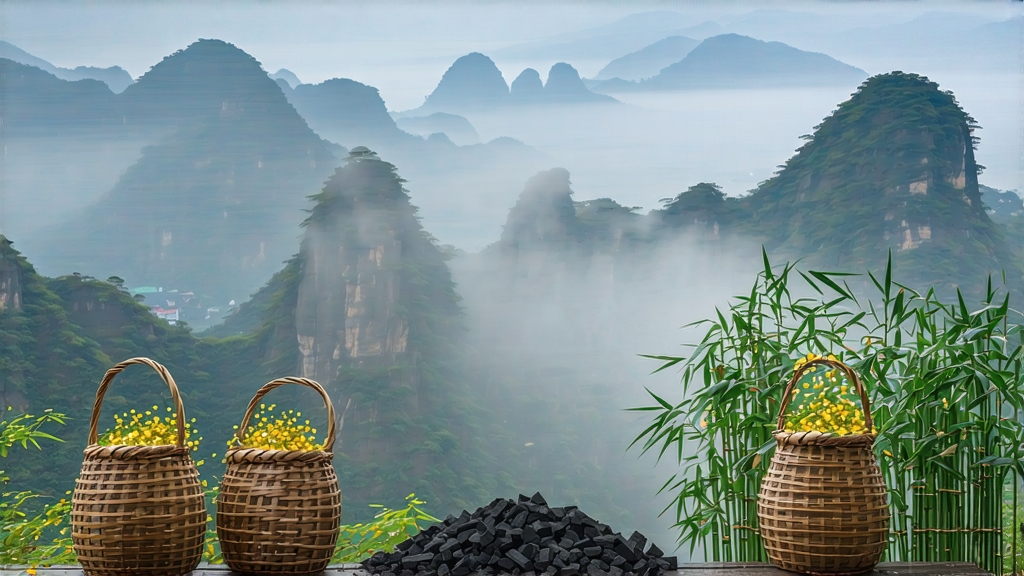
Tucked high in the mist-veiled Dabie Mountains of western Anhui province, Huoshan Huangya has quietly captivated Chinese emperors, Tang-dynasty poets, and modern tea connoisseurs for more than fourteen centuries. Unlike its better-known green cousin Longjing or the rock oolong of Wuyi, this “yellow bud” tea remains one of China’s least-exported treasures, its annual yield so small that even within China it is nicknamed “the tea of officials,” because only courtiers once held the privilege of drinking it. To international palates it offers a rare window into the elusive “yellow” category—an intermediate family that borrows the freshness of green tea yet acquires the mellow roundness of light fermentation. Understanding Huoshan Huangya therefore means stepping into a microclimate, a season, and a set of hand-crafts that have changed remarkably little since the Tang dynasty’s Tea Classic first praised the region’s “golden shoots.”
History and legend
Imperial records from the Ming Jiajing era (1522–1566) first list Huoshan Huangya as a gongcha, or tribute tea, shipped each spring in fast couriers to Beijing. Local chronicles claim that the Buddha-light mists wreathing the 1,774-metre peak of Huoshan endow the buds with a natural yellow hue, a myth that modern chemists attribute instead to the unique “menhuang” (sealed yellowing) step. During the Qing dynasty the tea all but vanished when mountain orchards were converted to maize; it was resurrected in 1972 by a small team of Anhui agronomists who grafted ancient mother trees found inside a Buddhist nunnery wall. Today the protected-origin zone covers only 933 hectares scattered across Huoshan, Jinzhai and Yuexi counties, a terroir so small that every kilogram can be traced to a single mountain slope.
Terroir and cultivar
The Dabie range acts as a climatic gate, catching humid air from the Yangtze valley and releasing it as nightly fog that slows photosynthesis, concentrates amino acids, and coats leaf surfaces with a waxy aromatic film. Soils are yellow-brown granite loam, mildly acidic (pH 5.2–5.7) and rich in ion-exchangeable potassium—ideal for the local Xiaoyezhong (small-leaf) tea trees. Farmers insist that buds must be picked before the Qingming festival, when two leaves sheath a plump bud no longer than 25 mm, covered in fine down that shimmers like wheat stubble. Such early harvests contain 4.8 % theanine and less than 6 % catechins, the biochemical signature behind Huoshan Huangya’s famous sweet-savory “umami broth.”
Craft: the alchemy of menhuang
After dawn plucking, baskets are rushed to village workshops where 2,000 years of green-tea know-how are deliberately bent toward yellow transformation. The first step is a brief shaqing (kill-green) at 140 °C on a cast-iron wok, just long enough—90 seconds—to denature polyphenol oxidase while preserving a living core of moisture. Next comes the signature menhuang: buds are piled 8 cm deep inside bamboo trays, covered with wet linen, and left in a 30 °C, 75 % RH chamber for 4–6 hours. During this sealed yellowing the leaf’s central vein slowly oxidizes, turning chlorophyll into pheophytin and releasing a hay-like aroma that locals compare to warm pumpkin. A master constantly adjusts pile height and cloth dampness; too little time keeps the tea green, too much pushes it into black territory. The third step is low-temperature rolling under 6 kg of pressure to rupture 35 % of cells, forming the tight, fish-hook shape that distinguishes Huoshan Huangya from straighter yellow teas of Sichuan. Finally, buds are given three consecutive bakes: 80 °C for 20 min, 60 °C for 40 min, and 50 °C for 60 min, each followed by a 30 min rest to allow internal moisture to migrate outward. The entire process spans 36 attentive hours, after which the tea’s moisture falls to 5 % and its color settles into the eponymous “tri-yellow” standard—yellow-green dry leaf, bright yellow liquor, and canary-yellow wet leaf.
Grades and nomen-tea-cl